Types of axes for meat and the subtleties of their operation
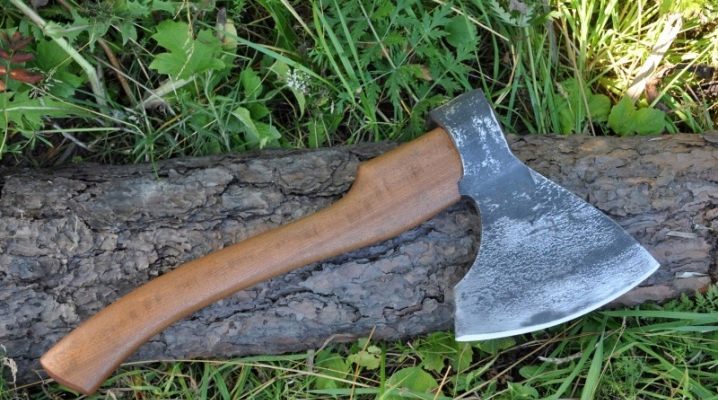
Kitchen tools, like other useful devices, perform a number of important functions in everyday life, based on which their configuration may vary. Among this list of kitchen utensils are axes for cutting meat. Due to their functionality, their use is not limited only to home use, so the tool is quite in demand today.
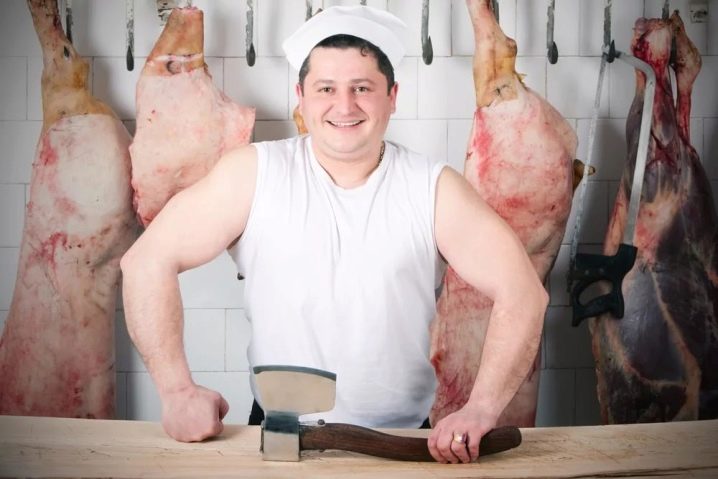
What it is?
Now, as an auxiliary tool for cutting meat or whole carcasses, a lot of different knives and cleavers are used, each of which performs a number of its functions. However, the most effective tool for preparing and cutting carcasses, including frozen meat products, is a meat and bone hatchet.
A chopping ax is required at different stages of the preparation of meat products., therefore, there are heavy butcher tools that are needed in the initial period of cutting, as well as more elegant kitchen options that are most often used in everyday life.
A meat cleaver can have different shapes, so the selection of the desired type will depend on the purposes of operation and on personal taste preferences. But the common characteristic for all types of devices is a large blade, as well as an impressive and strong handle, otherwise the tool is unlikely to cope with bones and meat on them.


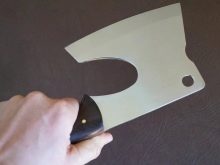
As for the shape of the blade, then this part should have small protrusions along the edges, which will connect the cutting part to the base. It is best if the protrusions turn out to be with concave contours. It is preferable that the meat ax is a one-piece construction, cast from metal with inserts of resin, wood or rubber on the sides. However, overlays are not required, so many handicrafts do not contain them.
As for the type of metal used for casting, in this case, preference is given to durable types of raw materials.resistant to corrosion and surface defects due to contact with bones and other solid components of the carcass. Most often, the production of cleavers is carried out using automated equipment, after which the tool undergoes manual grinding.
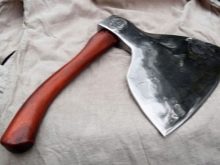
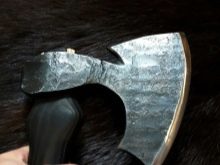

Lifetime considerations depend on the steel grade, the following metal grades are commonly used:
- U7A;
- U8;
- U8A;
- U8GA.
In order to make sure of the high quality of the ax, the consumer can check the properties of the blade before purchasing it by hitting the metal with a dense object. For a good product, the sound from the contact will be ringing and long.

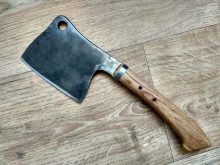
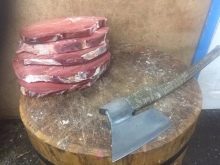
Main functions
The main tasks of the meat ax are clear from the name of the tool. However, based on the type of adaptation, their main functions can be distinguished.
- If the hatchet has a wide blade and an impressive mass, then it is assumed that the tool will not cut, but chop meat products of different densities. At the same time, during processing, most of the connective fibers in the meat will remain intact, which will provide juiciness to dishes from such a product.
- The ax, which will not have such a wide handle and a balanced shape, is designed to cut bones in meat. Such a tool will enable the bone tissue not to crumble or crack.
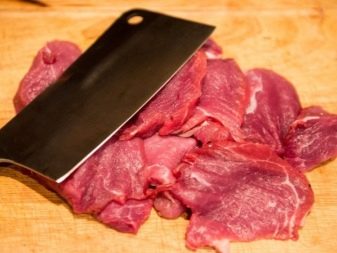
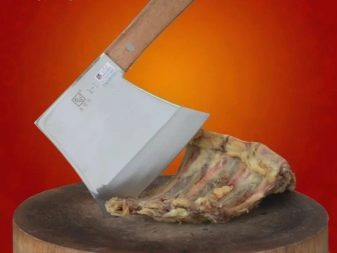
Varieties
Differences in tool configuration made it possible to classify axes. Considering the type of blade, they are:
- professional cleavers with a wide cutting area;
- tools with a medium blade width;
- axes with a small cutting element.
The last mincing option is recommended for simple cutting of the pulp, however, it is unlikely to cope with the task of chopping. For butchering carcasses, tools with a maximum and medium blade size are used. Such an inventory can capture a large area of the product, which makes it easier and faster to divide it into the necessary parts.
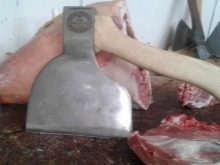
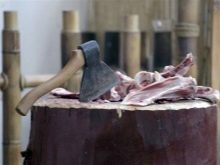

An ax knife for a butcher will be very weighty, as a rule, its weight is about 3 kilograms. Also on sale you can find a multifunctional version of a kitchen tool for meat - an ax hammer, which can perform several tasks at once. Such a product is not heavy, therefore it is suitable for use by housewives.
In addition, axes for processing meat products can be classified based on the type of handle with which the tool is equipped. Most often, a tree familiar to everyone is used for the handle, however, modern products for professional and domestic use for the most part have rubber or plastic handles that prevent the hatchet from sliding in the hand.

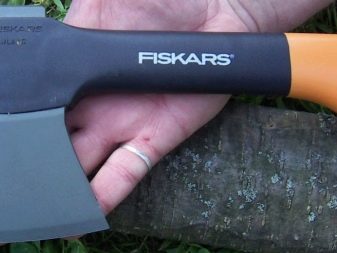
Selection recommendations
According to experts, when choosing an ax for cutting meat, some nuances should be taken into account.
Blade characteristics
This detail is the most important in the whole design, a good blade will be thick and weighty. It is these properties of the metal element that determine the assignment of this device to the category of hatchets, since it is the balance between the mass and thickness of the metal that will be responsible for the chopping capabilities of the tool. As for the shape, it can be straight or rounded.
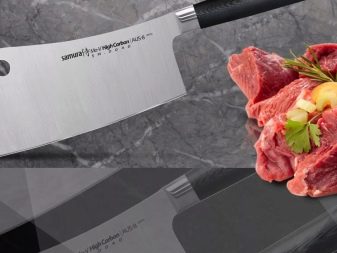
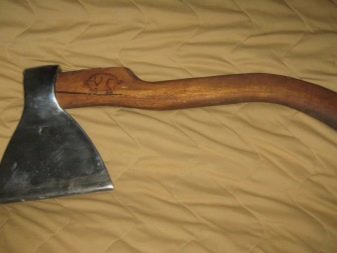
Product arm configuration
The optimal size of the handle will be the ability to operate the tool with one hand, that is, its length should be within the palm of your hand. In addition, it is best if it has a rounded shape with special grooves for a comfortable position of all fingers. This will prevent the tool from slipping out while cutting the meat.


Cutting edge type
The classic sharpening option is not suitable for an ax as it is important that the edge remains sharp in working order on each side. This feature will greatly facilitate further operation and maintenance of the ax due to the fact that it is this type of product that is easiest to sharpen by choosing the correct sharpening angle. The optimal angle is 40 degrees. Such a product will allow the instrument to cut fibers and bones as deeply as possible.
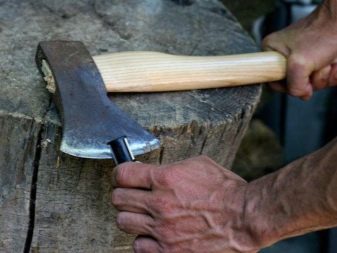
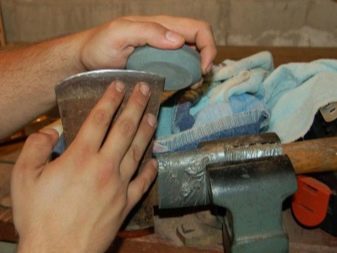
Type of steel used
As a rule, certified products, in contrast to handicraft products, will have a special stamp on the tool head. This abbreviation will contain data on the steel grade used for the production of the ax.
It is best to purchase a forged ax.
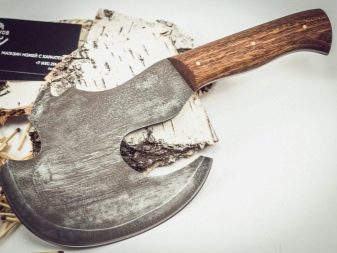
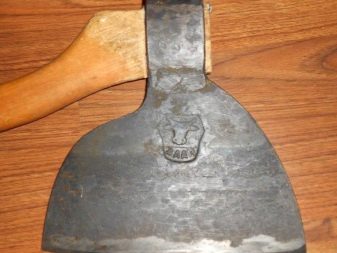
Tool center of gravity
It is important to pay attention to the fact that it should be in the area where the handle contacts the cutting part.
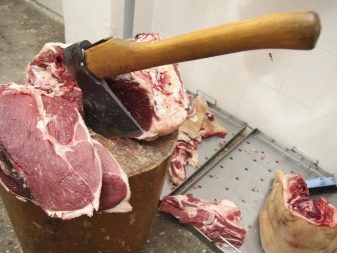

Additional configuration nuances
Good and high-quality products should have a special tab on the case, which will allow you to properly store the inventory after use.

Place of purchase and cost
Often, the cost of the same product will differ significantly when comparing the pricing policy of supermarkets and markets.Therefore, you can safely purchase kitchen tools at retail outlets, which will save money, however, this will not affect the quality of the purchased product in any way. Also, for the rare exploitation of an ax, it is simply pointless to buy an expensive tool. Today, inventory from domestic and foreign brands is on sale, which, for the most part, have high quality indicators of the products sold.
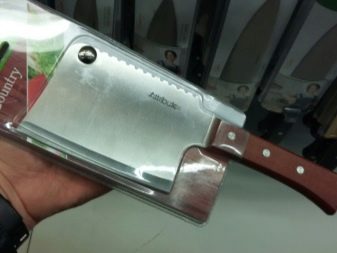
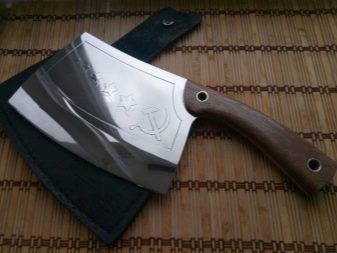
Ease of use
It is best to choose a kitchen or professional tool yourself. Before buying, you must definitely test the cleaver, hold it in your hands, evaluate the comfort of the handle, weight and other characteristics of the product you like. Otherwise, there is a risk that even a high-quality and attractive tool will be simply unsuitable for a cook, butcher or housewife.
The integrity and reliability of the proposed product, as a rule, can be determined by visual inspection, as well as in the process of even short-term contact with the ax.
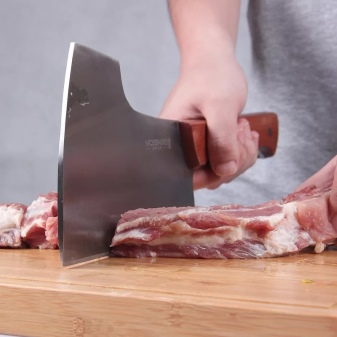

Usage Tips
Hatchets for working with meat products, like any household kitchen or professional tool, require proper operation and maintenance. Compliance with the recommendations will help to extend the life of the device, in addition, it will provide it with visual appeal and good quality of the blade.
- It will be more correct to keep the cleavers in a separate box from all other tools. Today, manufacturers also offer convenient equipment stands for these purposes, as a rule, they are made of wood. This option will allow you to compactly place the necessary items in the kitchen, and also make it possible to save space. In addition to the stands, you can store the cleavers hanging on a special hook.
- Do not delay washing the hatchets after cutting the meat. To make the tool last longer, it would be more correct to wash the inventory and wipe it dry immediately after use, then send it to storage. Kitchen axes can also be cleaned after use using a dishwasher, however, preference should still be given to the manual type of tool care.
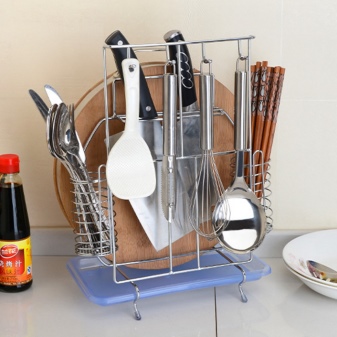
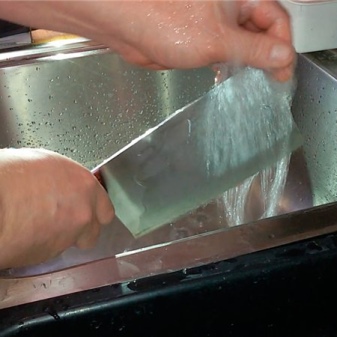
- It is best to work with an ax in conjunction with a cutting board. The best option would be a wooden or plastic board. But it is worth refraining from using an ax with a glass or ceramic board, since the contact of such materials can lead to premature dullness of the cutting element on the tool.
- Over time, cleavers will need to be sharpened to maintain precision and accuracy on meat products. To properly sharpen the tool, you should resort to the services of an experienced craftsman who specializes in servicing kitchen utensils. A sharp tool will allow you to make a minimum of effort when cutting meat.
- In order for the cutting of the carcass to be carried out efficiently, when struck with an ax, you should hit the selected place only once. Otherwise, the bones contained may not be split, but crushed, which will negatively affect the further preparation of meat dishes.
For information on how to make a kitchen hatchet for chopping meat yourself, see the video below.



































































The comment was sent successfully.